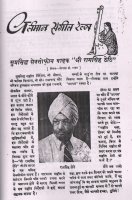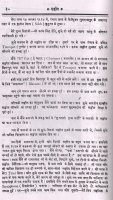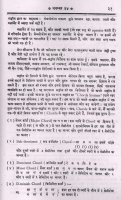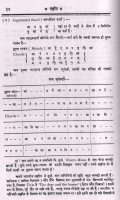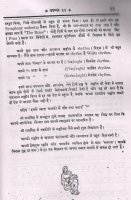Famous Saxophone Player Mr. Ram Singh Thethi
Gopal B. Rajan
[Note: Translation to English done diligently by dear friend Mr Rajendra Bora (राजेन्द्र बोड़ा) of Jaipur Rajasthan, India. The original article is from an old issue of the Sangeet Magazine.]
Some compositions of well-known music director Naushad, Anil Biswas, C. Ramchandra and Pandit Husnlal Baghatram have echoed in every corner of India becoming popular. Due to this a large number of people are familiar with the names of these directors. But very few people know that among the creators of these compositions there is yet another person named Mr. Ram Singh Thethi, who is a famous saxophone player of India. Since he is a pioneer in writing and composing notations of western music, all music directors of the film world have made him their assistant.
His residence which he has named ‘Sargam’ is on the Matunga Road of Bombay.
It was evening time and I was talking to him on the second floor of ‘Sargam’ and expressing his views, he said “Music art is God's creation, that's why it is the duty of every music lover to appreciate the diverse music of the world”.
When I asked him to kindly express this thought with your own life experience so that I can check whether this feeling indeed originated from your experience or from your imagination, he replied: As you wish. Listen. I was born in a noble Sikh family on 25 August 1914 in Taragarh city of Gurdaspur district in the Punjab province.
My respected father Karam Singh Thethi left for his heavenly abode when I was at the tender age of two.
I was fond of music since childhood. Near our house lived Master Laxman Singh, the famous Trumpet player of the Punjab.
Listening to his music an urge developed in me too to learn. I started learning western music from Masterji on “E” Flat Clarinet. I went to Singapore with Masterji when I was five. He used to play Trumpet in a Military Band there. After some days I also started playing Clarinet in the Opera and other Bands there.
This way our days in Singapore passed with fun. Later we stayed in Malacca also for some days. That's how my ten years were spent there. Then I felt the desire to return to India. Fulfilling the urge, I reached Amritsar and settled there to make home.
I had experienced a lot of western music. Now I desired to learn Indian classical music. This desire was fulfilled by the musical training from Ustad Muhammaddin.
Later I accepted musical job in the plays of the Gujarati Drama Party of Nakku Bai of Karachi.
When I was in Karachi, I used to listen to film music in which I loved the music of Mr. Anil Biswas more than others.
In those days there was a lot of promotion of light and film music in Calcutta. So I went to Calcutta in 1937 in search of some good job. But reaching there I was very disappointed.
I thought let's go to Bombay before returning to Karachi and see if there was something for myself. With this aspiration I came to Bombay. First I met Ramprasad ji who advised me to go to Shri Anupam Ghatak, the famous film music director of those days. Mr. Ghatak and Mr. Anil Biswas used to make music direction together in the same company. Mr. Ghatak took my trial and asked me to come again in the evening so that Mr. Biswas, who used to come in the evening, could test my playing. I then came to know that there was a Clarinet player in Anil Da's orchestra. Therefore, I played Saxophone instead of the clarinet in the evening trial. Meeting with Anil Da fulfilled my two wishes. First, I got a job with him and the second, I got associated with the musical knowledge of my favourite musician.
Playing Saxophone proved easy for me because there is not much difference between it and the Clarinet. The Clarinet has three and a half octaves and a key (which operates the reed) changes. The shape of the Saxophone is slightly different from that of Clarinet. But it too is based on reeds. Here we get two and half octaves and the key is same for the higher octave and the lower octave.
I am fortunate that strong bonding between Anil Da and myself is not over yet and my only prayer is that it lasts.
I work with Anil Da as assistant music director. Apart from him I have worked with music directors like Mr. Naushad, Mr. Sajjad, Mr. C. Ramchandra, Mr. Vasant Desai, Pandit Husnlal and Mr. K. Datta.
I like the process of western notation writing for music because with the help of this, playing of different instruments and the main vocal can be composed in a balanced maner. Writing this type of composition and its balanced composition is due to the western notation. This is a feature of western music which is not found in our music. Apart from this, I also like the chord system of western music very much.
Using this element in a small measure in our classical music will add innovation to our music. This experiment will be more beautiful on instrumental music than vocal singing. Now I'll tell you a couple of little things about the chords.
There are many types of chords. [Note: Here Mr Ram Singh explains the following Chords: Major, Sub-Dominant, Dominant, Minor, Diminished and Augmented. He then explains it using Raga Bhairavi and Raga Bhoopali.]
Of course, please don’t take this to mean that I like everything in western music. I don't like their system of vocal singing at all. I like to listen to their music only on instruments.
I like creation of Ragas the best thing in Indian music. Anil Da (Anil Biswas) and myself have jointly composed a symphony in Raag Multani titled ‘The Dear And The Hunter’. All the rules of Raga have been followed in it but the piece is in the foreign style. It was our first effort to fuse Indian and Western music. We presented it in a few big programmes and the audiences appreciated it very much. We have recently created another symphony, which is based on Rag Malhar and its title is ‘The Rains’. After a few days we are going to send both the creations to foreign countries, particularly the European communities, by having the notation printed.
There are great similarities too between some Indian Taal and rhythm of Western music. Like taal ‘Dadra’ is similar to Waltz rhythm.
The 6/8 rhythm is similar to our taal ‘Khemta’
The 5/8 rhythm is similar to taal of 10 Matraa (beat).
The 7/8 rhythm is similar to taal of 14 Matraa (beat).
After serving both the Western and the Indian music for so many years I see only the special features of the both. And this is also the fact that the Western music has reached every country of the world whereas our classical music has not properly spread in our own country.
Tell me, what more can I tell you!
Telling me his life story Mr. Ram Singh has proved that his ideas of music are based on his own experiences.
Ram Singh has all the qualities of a musician of a high order.
Apart from music, he is very interested in photography and agronomy.
With his cheerful nature and charming personality, he is able to make an impression on every guest who visits his home ‘Sargam’.
Note: The original may be read here.


